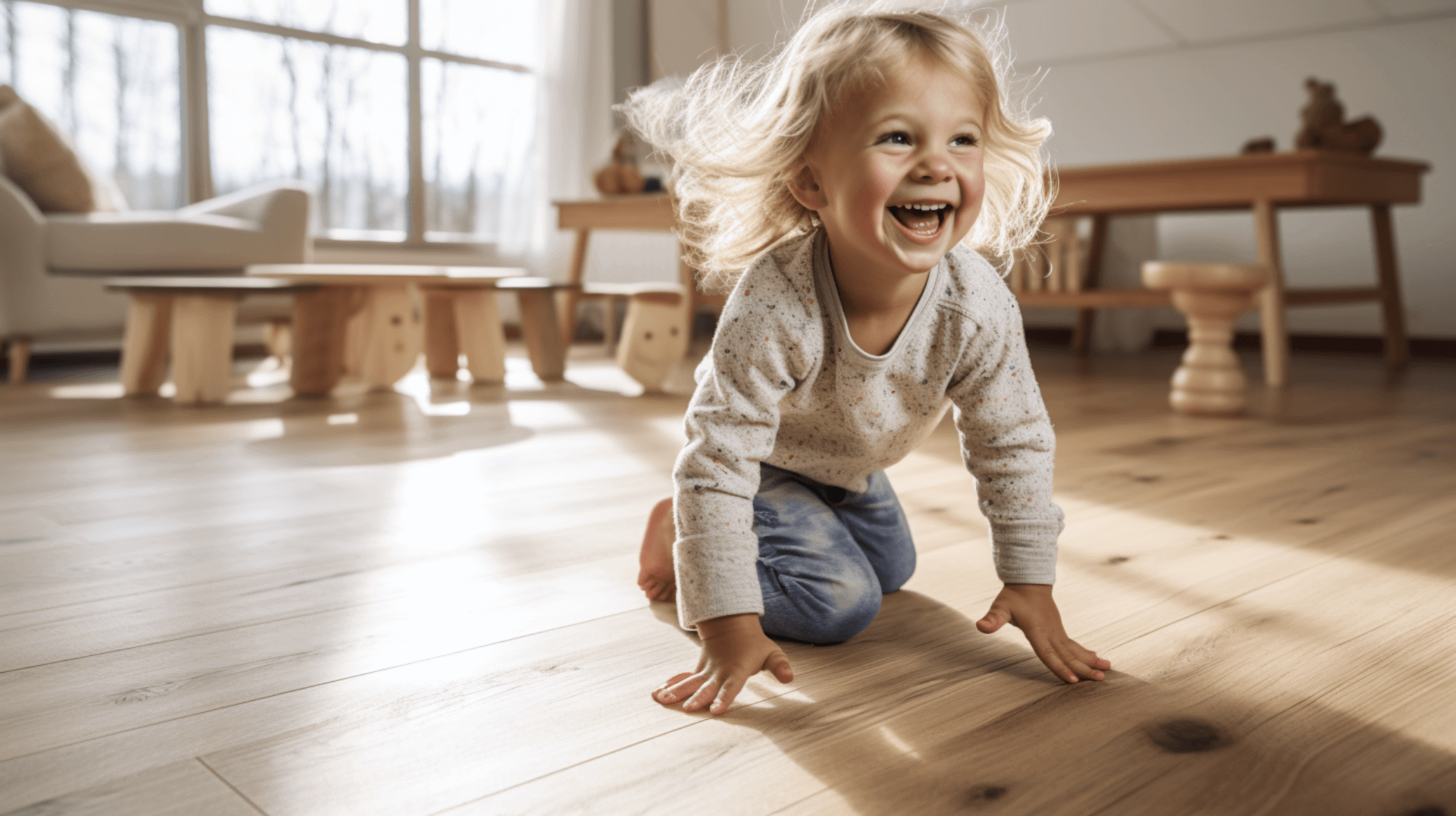Introduction to Child Safe Flooring and Engineered Wood
Child safe flooring is designed to provide a safe environment for children and other vulnerable individuals. It is made from non-toxic, non-slip, and easy-to-clean materials. On the other hand, engineered wood flooring is a durable and strong flooring option made from layers of wood bonded together. It is resistant to scratches and dents, making it suitable for high-traffic areas.
Child safe flooring ensures the safety of children in several ways. it is slip-resistant, reducing the risk of slips and falls. it is easy to clean and maintain, minimizing the presence of bacteria and germs. it is durable and long-lasting, withstanding the wear and tear of everyday life. it is non-toxic, making it safe for children and other vulnerable individuals.
Engineered wood flooring contributes to child safety by providing a stable and slip-resistant surface. Its non-slip properties help prevent accidents caused by slippery floors. Additionally, engineered wood flooring is easy to clean, reducing the risk of bacteria and germs that can harm children. it is made from non-toxic materials, ensuring the health and well-being of children. engineered wood flooring is often more affordable than solid wood flooring, making it accessible to families with children.
Understanding the Importance of Child Safe Flooring

Child safe flooring is essential for both homes and businesses as it helps create a safe environment for children and other vulnerable individuals. It is made from non-toxic, non-slip, and easy-to-clean materials, making it ideal for areas with high foot traffic.
The potential risks of not having child safe flooring include slips and falls, which can lead to serious injuries. Additionally, without child safe flooring, there is an increased risk of bacteria and germs, which can cause illnesses. Furthermore, non-child safe flooring can be made from toxic materials, which can be harmful to children and other vulnerable individuals.
Child safe flooring contributes to the overall safety of a child in several ways. it is slip-resistant, reducing the risk of slips and falls. This is particularly important in areas where children are present, as they are more prone to accidents. child safe flooring is easy to clean and maintain, minimizing the presence of bacteria and germs that can cause illnesses. it is durable and long-lasting, withstanding the wear and tear of everyday life. child safe flooring is made from non-toxic materials, ensuring the health and safety of children and other vulnerable individuals.
The Benefits of Engineered Wood Flooring for Child Safety
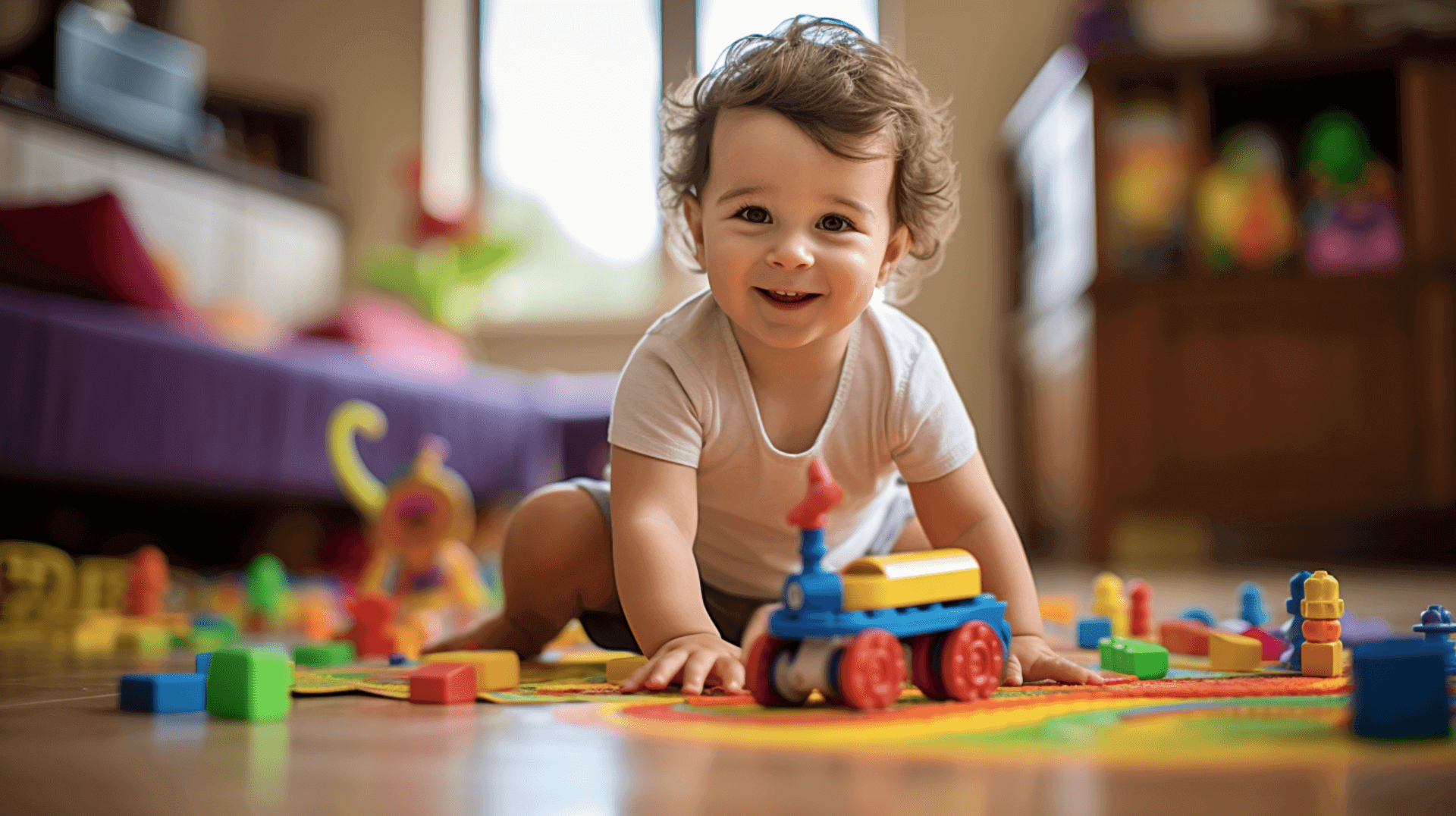
Engineered wood flooring is an excellent choice for child safety as it reduces the risk of slips and falls, splinters and other injuries, and contributes to a healthier indoor environment. Its non-slip properties help prevent accidents caused by slippery floors, making it ideal for areas with high foot traffic. Additionally, engineered wood flooring is resistant to scratches and dents, reducing the risk of splinters and other injuries.
Engineered wood flooring also contributes to a healthier indoor environment. It is easy to clean and maintain, minimizing the presence of bacteria and germs that can cause illnesses. it is made from non-toxic materials, ensuring the health and well-being of children and other vulnerable individuals.
Furthermore, engineered wood flooring meets the definition used in guidance for a suspended timber floor. It is free from rot or decay, infestation, and signs of decay. It should also have a moisture content that does not exceed 20% and be free from water or condensate pipes in the sub-floor void.
The Construction and Types of Engineered Wood Flooring
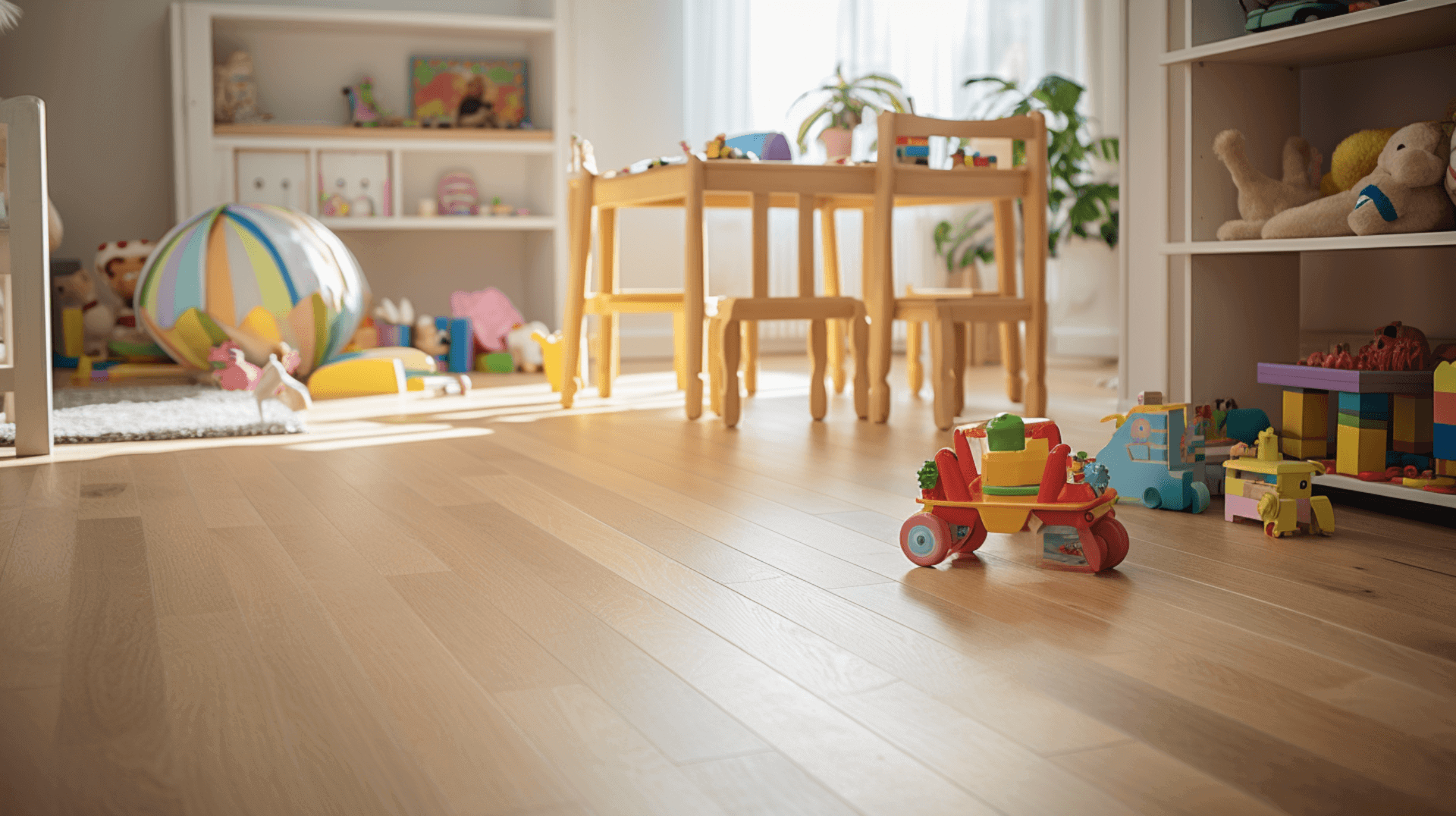
Engineered wood flooring is constructed from layers of wood bonded together. The top layer is made from a hardwood veneer, while the bottom layers are made from plywood or high-density fiberboard. This construction makes engineered wood flooring more durable and stable than solid wood flooring, making it an ideal choice for areas with high foot traffic, such as homes and businesses.
There are several types of engineered wood flooring, including multi-ply, three-ply, and single-ply. Multi-ply engineered wood flooring is made from multiple layers of wood, making it more stable and durable than other types of engineered wood flooring. Three-ply engineered wood flooring is made from three layers of wood, making it more resistant to moisture and temperature changes. Single-ply engineered wood flooring is made from a single layer of wood, making it more affordable than other types of engineered wood flooring.
The different types of engineered wood flooring contribute to child safety in several ways. they are slip-resistant, reducing the risk of slips and falls. This is particularly important in areas where children are present, as they are more prone to accidents. engineered wood flooring is easy to clean and maintain, minimizing the presence of bacteria and germs that can cause illnesses. This is especially beneficial for child safety, as children are more susceptible to infections. engineered wood flooring is made from non-toxic materials, ensuring the health and safety of children and other vulnerable individuals.
The Aesthetic and Functional Benefits of Engineered Wood Flooring

Engineered wood flooring offers both aesthetic and functional benefits. Its natural wood grain and texture enhance the aesthetic appeal of a room, making it an ideal choice for homes and businesses. Additionally, its durable construction makes it resistant to scratches and dents, contributing to the longevity of a floor.
Engineered wood flooring also contributes to a cleaner and healthier indoor environment. Its easy-to-clean and maintain properties minimize the presence of bacteria and germs that can cause illnesses. Furthermore, it is made from non-toxic materials, ensuring the health and safety of children and other vulnerable individuals. It also meets the necessary criteria for a suspended timber floor, such as being free from rot or decay, infestation, and signs of decay, and having a moisture content that does not exceed 20%.
When installing engineered wood flooring, it is important to consider proper ventilation, insulation, and the installation of damp-proof courses. These measures help prevent issues such as condensation and ensure the longevity of the flooring. Additionally, other services like gas pipes, electrical wiring, flues, and underfloor heating should be properly installed and integrated with the flooring.
The Environmental Impact of Engineered Wood Flooring
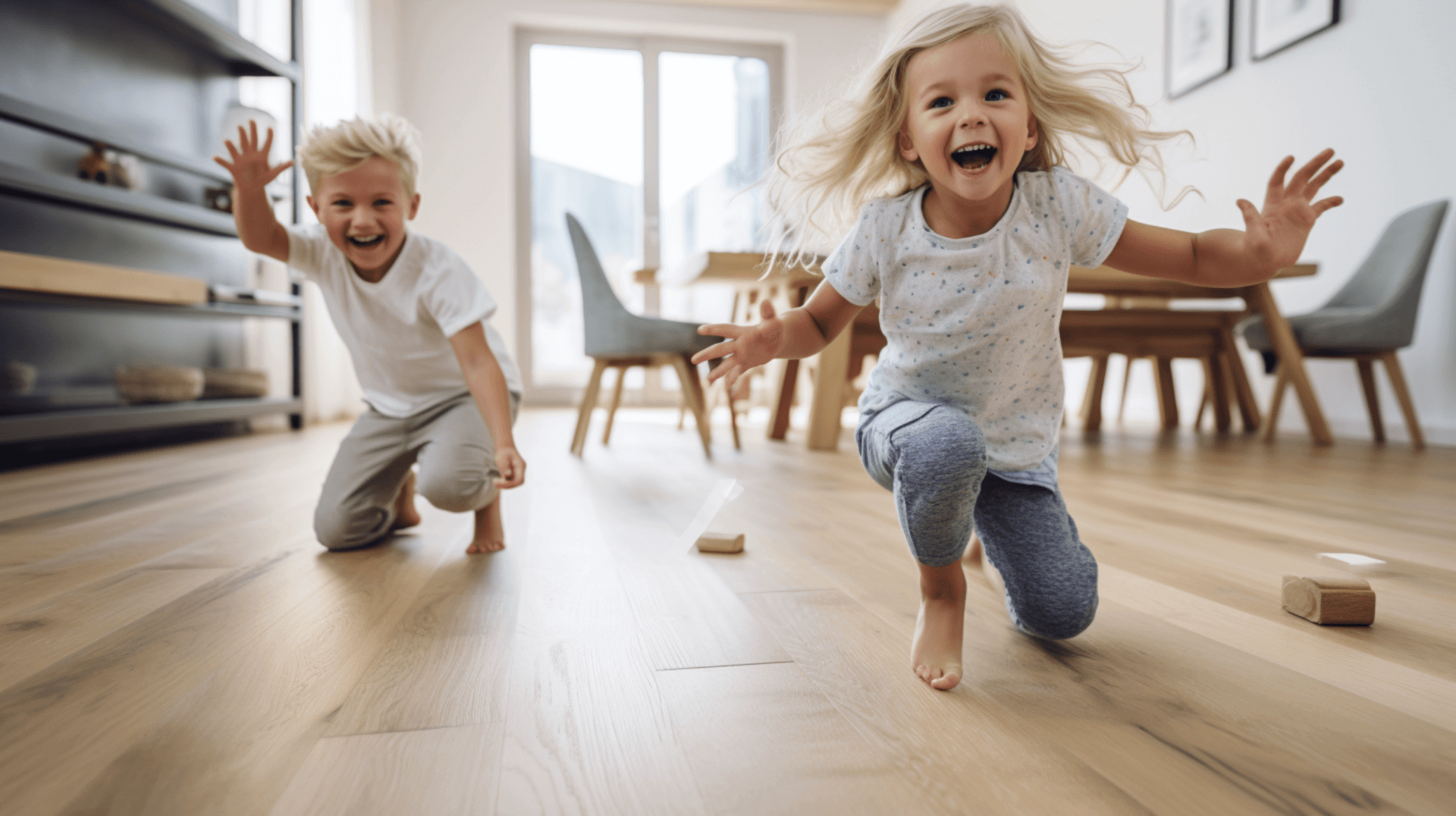
Engineered wood flooring is an environmentally friendly choice due to its sustainable production process and long-lasting durability. Its production process uses fewer resources than traditional hardwood flooring, making it a more efficient and cost-effective option. Additionally, its durable construction makes it resistant to scratches and dents, contributing to its longevity and reducing the need for frequent replacements.
The production process of engineered wood flooring also has a minimal environmental impact. It uses fewer resources than traditional hardwood flooring, and its production process does not involve the use of toxic chemicals or glues. Additionally, it is made from recycled wood, making it a more sustainable choice than other types of flooring.
Engineered wood flooring also contributes to sustainable living. Its easy-to-clean and maintain properties minimize the need for harsh cleaning chemicals, reducing the environmental impact of cleaning products. Additionally, its non-toxic composition ensures the health and safety of children and other vulnerable individuals.
To improve the thermal performance of a suspended timber floor, it is important to consider proper ventilation, insulation, and the installation of damp-proof courses. These measures help prevent issues such as condensation and ensure the longevity of the flooring. By choosing engineered wood flooring, individuals can enjoy the beauty of natural wood while minimizing their environmental impact and promoting sustainable living.
Choosing the Right Engineered Wood Flooring for Your Home or Business

When choosing engineered wood flooring for a home or business, there are several factors to consider. it is important to consider the type of engineered wood flooring that is best suited for the space. Multi-ply, three-ply, and single-ply engineered wood flooring are all available, and each type has its own advantages and disadvantages. Multi-ply engineered wood flooring offers increased stability and durability, making it a suitable choice for areas with high foot traffic. Three-ply engineered wood flooring provides enhanced resistance to moisture and temperature changes, making it ideal for areas prone to humidity or temperature fluctuations. Single-ply engineered wood flooring is a more affordable option, making it suitable for budget-conscious individuals.
Child safety is an important consideration when choosing engineered wood flooring. Slip-resistant properties are crucial to reduce the risk of slips and falls, especially in areas where children are present. Additionally, easy-to-clean and maintain properties help minimize the presence of bacteria and germs, promoting a cleaner and healthier indoor environment for children. It is also important to ensure that the engineered wood flooring is made from non-toxic materials, ensuring the health and safety of children and other vulnerable individuals.
Proper installation measures, such as ventilation, insulation, and damp-proof courses, should be considered to ensure the best results and longevity of the flooring. It is important to address any water or condensate pipes in the sub-floor void during the design or installation of insulation. Regular repairs and visual inspections of all floor voids should also be conducted to ensure the safety and durability of the flooring.
The Installation Process of Engineered Wood Flooring

The installation process of engineered wood flooring involves several steps and requires the use of specific tools and materials. the sub-floor should be prepared by removing any existing flooring, cleaning the surface, and ensuring that it is level and free from any debris. It is also important to leave a gap of at least 10mm between the flooring and the walls to allow for expansion. Additionally, any water or condensate pipes in the sub-floor void should be addressed during the design or installation of insulation.
The next step is to lay the engineered wood flooring. This involves measuring the area, cutting the planks to size, and laying them in the desired pattern. It is important to ensure that the planks are laid correctly and securely, as any gaps or loose planks can cause issues such as squeaking or warping. The planks should be secured using the appropriate fasteners, such as nails or glue, following the manufacturer’s guidelines.
During the installation process, it is important to consider proper ventilation, insulation, and the installation of damp-proof courses. These measures help prevent issues such as condensation and ensure the longevity of the flooring. Additionally, other services like gas pipes, electrical wiring, flues, and underfloor heating should be properly installed and integrated with the flooring.
The tools and materials needed for the installation process include a saw, hammer, nails or glue, spacers, and a moisture barrier if necessary. It is important to use high-quality tools and materials to ensure a successful installation.
Maintaining Your Engineered Wood Flooring

Maintaining engineered wood flooring is essential to ensure its longevity and promote a healthy indoor environment. Regular cleaning and maintenance practices help keep the flooring looking its best and reduce the risk of damage.
The best practices for cleaning and maintaining engineered wood flooring include sweeping or vacuuming the floor regularly to remove dirt and debris. It is important to use a soft-bristle broom or a vacuum cleaner with a brush attachment to avoid scratching the surface. Additionally, using a damp mop or cloth with a mild wood floor cleaner specifically designed for engineered wood flooring can help remove any stubborn stains or spills. It is important to avoid using excessive water or harsh cleaning chemicals, as these can damage the flooring.
To ensure the longevity of your engineered wood flooring, it is important to inspect the flooring regularly for any signs of damage, such as loose planks or warping. Addressing any issues promptly can prevent further damage and maintain the structural integrity of the flooring. Regular repairs and visual inspections of all floor voids should also be conducted to ensure the safety and durability of the flooring.
Proper ventilation is crucial for maintaining the health of your engineered wood flooring. Ensure that the room has adequate airflow to prevent moisture buildup, which can lead to rot or warping. It is also important to maintain a stable indoor humidity level between 30% and 50% to prevent excessive expansion or contraction of the wood. Additionally, using materials that are appropriately certified for use as insulation under timber floors can help achieve the desired U-value and prevent moisture-related issues.
The Role of Professional Floor Sanding in Maintaining Engineered Wood Flooring

Professional floor sanding is an essential aspect of maintaining engineered wood flooring. It plays a crucial role in restoring the flooring to its original condition and enhancing its safety features. Professionals like GJP Floor Sanding offer numerous benefits in this regard.
With their experience and expertise, professionals ensure that the floor sanding job is executed correctly and efficiently. They possess the latest tools and equipment necessary to achieve high-quality results. Additionally, professionals can provide valuable advice on best practices for maintaining the flooring, including considerations such as the presence of vents or grilles, water or condensate pipes in the sub-floor voids, and necessary repairs.
Floor sanding performed by professionals effectively eliminates scratches, dents, and other damages that may have accumulated over time. It also removes dirt and debris, restoring the cleanliness and hygiene of the flooring. professional sanding can revive the original color and finish of the flooring, giving it a fresh and rejuvenated appearance.
By hiring professionals like GJP Floor Sanding, you can ensure that the job is done to the highest standard. We have the expertise to assess the flooring, identify any underlying issues, and address us appropriately. This not only enhances the visual appeal of the flooring but also contributes to its safety features.
Expert Advice on Child Safe Flooring and Engineered Wood
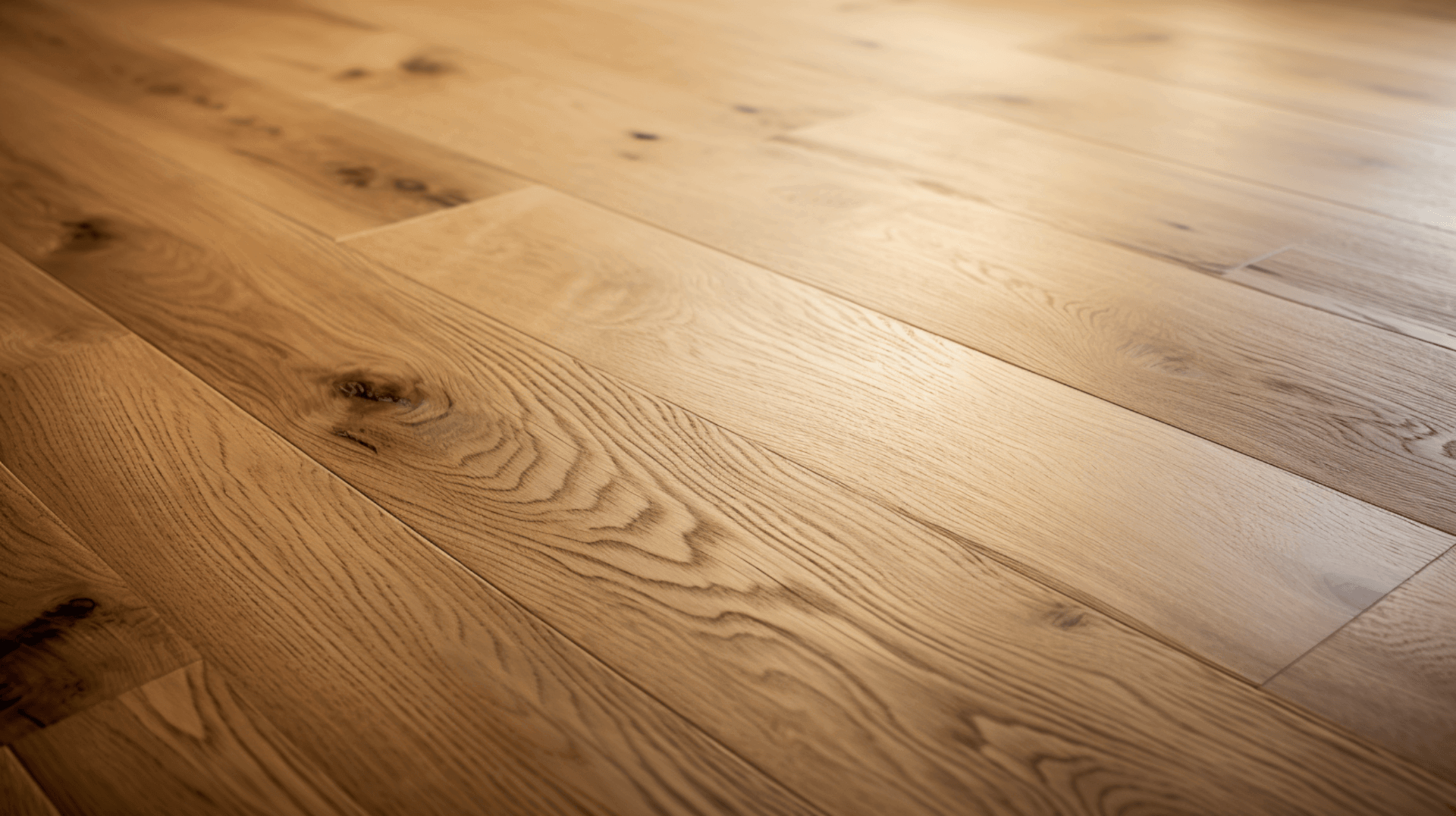
Engineered wood flooring is a popular choice for homes and businesses due to its durability and aesthetic appeal. when it comes to child safety, experts recommend taking extra precautions.
Experts suggest that engineered wood flooring should be installed with a moisture barrier to prevent moisture from seeping into the sub-floor and causing damage. Additionally, it is important to ensure that the flooring is properly secured and level to prevent any tripping hazards. Regular inspections should be conducted to check for signs of damage, such as loose planks or warping, and any issues should be addressed promptly. It is also important to use the appropriate tools and equipment during installation, as well as personal protective equipment.
Proper ventilation is crucial for maintaining the safety of engineered wood flooring. This includes ensuring that the entrance point is the correct size and providing adequate ventilation throughout the space. It is also important to install damp-proof courses and address any water or condensate pipes in the sub-floor voids. Gas pipes, electrical wiring, flues, and underfloor heating should be properly installed and integrated with the flooring to ensure safety. Testing the air quality is also recommended.
Experts also recommend using non-slip rugs or mats in areas where children are likely to play. This helps prevent slips and falls, adding an extra layer of safety to the flooring.
To maintain the safety and aesthetics of your engineered wood flooring, professionals like GJP Floor Sanding can provide valuable assistance. We have the expertise to assess the flooring, identify any underlying issues, and address us appropriately. Our services, including floor sanding, can help eliminate scratches and restore the flooring’s original condition, enhancing both safety and visual appeal.
Contact GJP Floor Sanding for Your Engineered Wood Flooring Needs
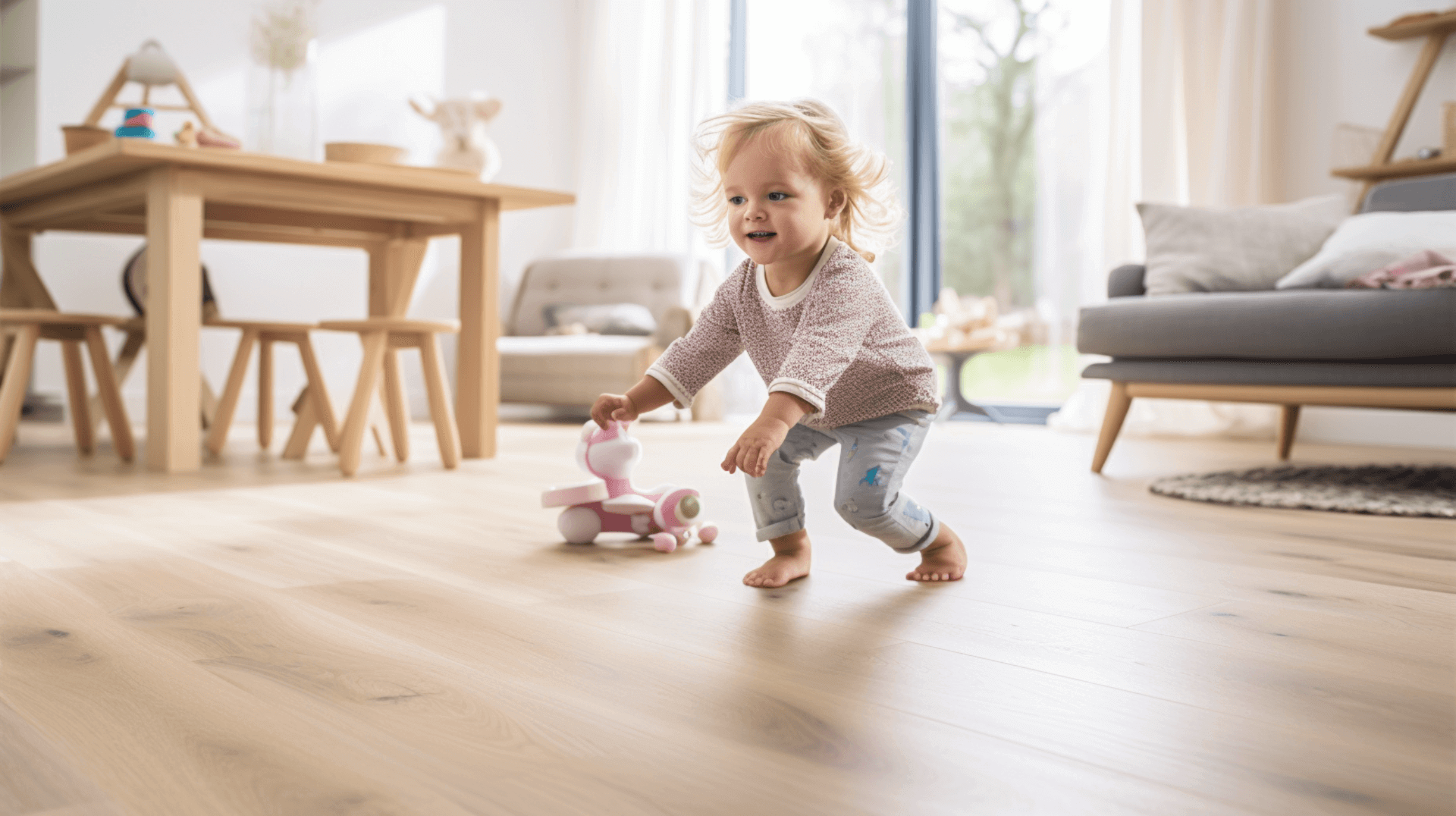
GJP Floor Sanding is the perfect choice for all your engineered wood flooring needs. With our experience and expertise, we can provide valuable advice on best practices for installing and maintaining your flooring. We are knowledgeable about the best materials to use for insulation under timber floors, such as roll or batt insulation, spray foam, and damp-proof courses. We can also advise on the best methods for insulating a suspended timber floor, taking into consideration the presence of vents or grilles, water or condensate pipes in the sub-floor voids, gas pipes, electrical wiring, flues, and underfloor heating.
GJP Floor Sanding offers a wide range of services, including installation, repairs, and floor sanding. Our team of experts can assess the flooring, identify any underlying issues, and address us appropriately. We possess the latest tools and equipment necessary to achieve high-quality results. Whether you need a new installation, repairs to your existing flooring, or a complete sanding and refinishing job, GJP Floor Sanding has the expertise to deliver exceptional results.
To contact GJP Floor Sanding for a consultation or service request, you can visit our website or give us a call. Our friendly and knowledgeable team will be happy to assist you and provide the best solutions for your engineered wood flooring requirements.
